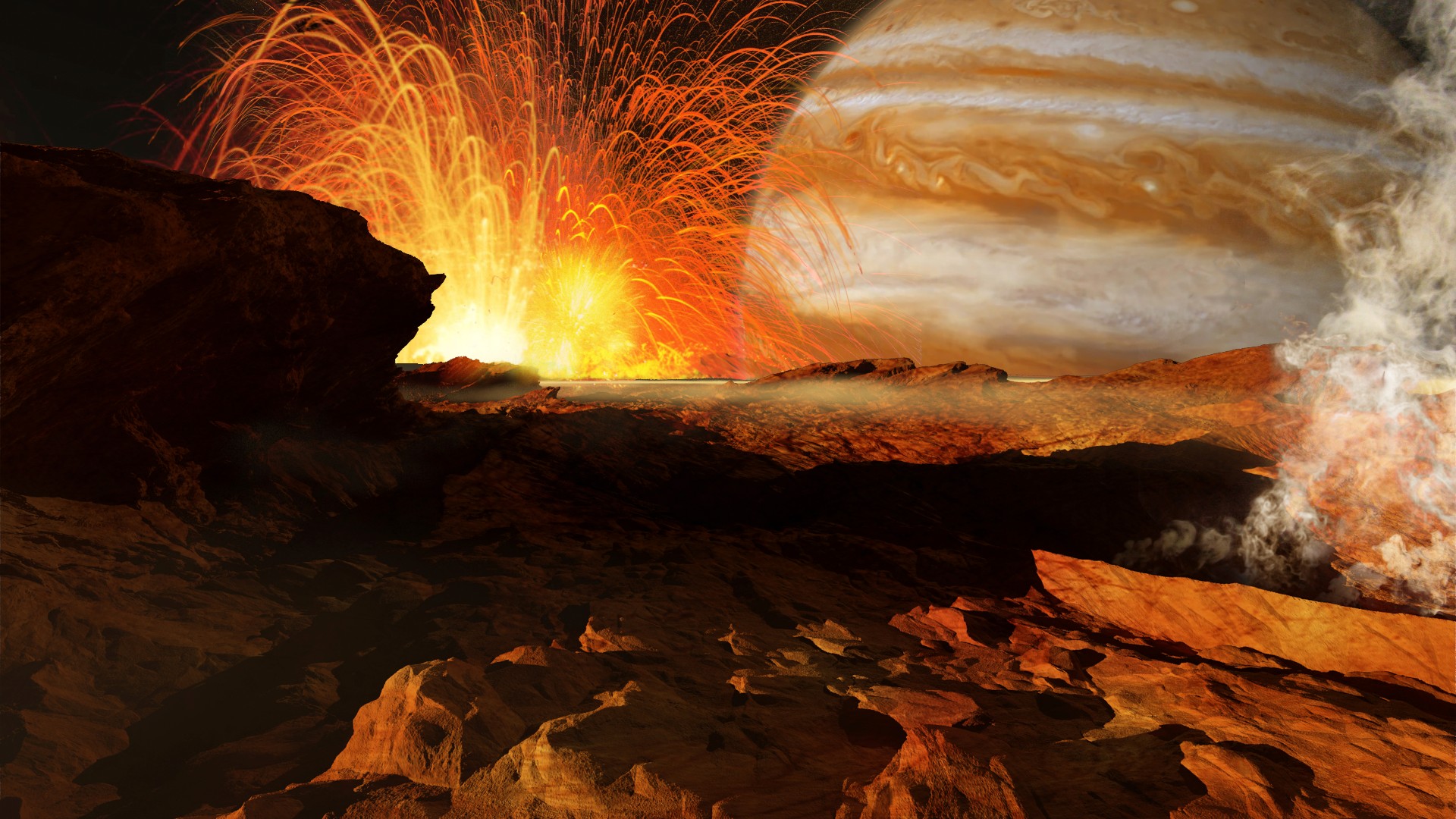Mystery Behind Io’s Volcanic Eruptions Shocks Scientists
For decades, scientists believed they understood what causes volcanic eruptions on Jupiter’s moon Io. As the most volcanically active body in our solar system, Io has long been a subject of fascination. However, new discoveries have turned what was once thought to be settled science into an enthralling mystery. Experts are now grappling with fresh questions, leaving many baffled yet thrilled at the prospect of unveiling the planet’s deep secrets.
The volcanic activity on Io is not only extraordinary but also a crucial puzzle piece in understanding how celestial mechanics work in our solar system. But what exactly is the cause, and why has this mystery shocked scientists? Let’s dive deeper and explore the possibilities that have everyone talking.
Before diving deeper, make sure to check out related news and updates on Zex News for the latest discoveries in the realm of space exploration.
What We Thought We Knew About Io’s Volcanic Eruptions
Until recently, the general consensus among planetary scientists was that Io’s intense volcanic activity stems from tidal heating. As Jupiter’s gravitational pull stretches and compresses Io, frictional forces inside the moon generate heat. This, in turn, melts rock and fuels Io’s iconic volcanoes, which spew lava hundreds of kilometers into the sky.
It was a seemingly straightforward explanation — one that tied together differences in gravity, orbital resonance with other moons like Europa and Ganymede, and the peculiar geology observed on Io. But now, this hypothesis is being put to the test.
The New Mystery Behind Io’s Volcanic Eruptions
A recent analysis of data from NASA’s Juno spacecraft has unveiled an unsettling inconsistency. Juno, which has orbited Jupiter since 2016, has closely studied the effects of Jupiter’s magnetosphere and gravitational forces on its moons. Much to the researchers’ surprise, certain volcanic hotspots on Io appear to behave in ways not entirely explained by tidal forces alone.
These anomalies have sparked wide-ranging theories among scientists. Some now suspect that Io’s volcanic behavior might involve layers of global subsurface magma sloshing around in unpredictable ways. Others are pointing to interactions between Io and Jupiter’s massive magnetic field, which could significantly heat Io’s interior. Either way, the findings suggest previously unknown processes are at work, adding layers of complexity to an already fascinating celestial phenomenon.
Why Does This Mystery Matter?
You might wonder why scientists are so shocked by this revelation. The implications extend far beyond Io itself. Solving the puzzle of what causes volcanic eruptions on Io could change how we understand the dynamics of celestial bodies, especially those that orbit giant planets. It also raises fundamental questions about the inner workings of other moons across the cosmos — and even Earth-like exoplanets in distant solar systems.
Io serves as a “natural laboratory” for studying tidal heating, magnetic interactions, and planetary geology. If our understanding of its volcanic activity is flawed, it means we may need to revisit years of assumptions about similar processes across the universe. The stakes are immense, and the pursuit of answers is as captivating as the questions themselves.
Competing Theories Surrounding Io’s Volcanoes
Let’s take a closer look at some of the most compelling theories scientists are currently exploring:
- Subsurface magma oceans: This theory suggests there could be unstable magma oceans beneath Io’s crust, creating patterns of activity unrelated to tidal forces.
- Magnetic field interactions: Jupiter’s powerful magnetic field might be transferring energy directly into Io, generating internal heat that triggers eruptions.
- Mechanical stresses: Some scientists believe previously overlooked mechanical stresses could generate internal friction in Io’s deep interior, contributing to volcanic outbursts.
- Unknown geological processes: Lastly, some researchers are investigating entirely new mechanisms that could account for volcanic activity on the moon.
Each of these theories opens a new door to understanding Io. Yet, none of them perfectly explain all the observed phenomena, keeping the mystery alive and fueling intense debate within the scientific community.
The Role of Juno in Unraveling Io’s Mysteries
Thankfully, NASA’s Juno mission isn’t slowing down. As the spacecraft continues to collect data, it reveals more about the interplay between Jupiter and its moons. These findings are instrumental in sharpening scientists’ understanding of Io’s volcanism and its connection to broader astronomical processes.
In fact, upcoming flybys of Io by Juno promise to bring even higher-resolution data. Scientists are excited about the possibility of locating additional heat sources, dynamic geological features, or evidence of processes once deemed too speculative to consider seriously. With technology like Juno’s instruments at the forefront, Io’s mysteries might not remain unsolved for much longer.
The Bigger Picture Beyond Io
This puzzle is about more than one moon. The findings on Io could help scientists improve models of planetary systems across the universe. Io itself might even serve as an analog for volcanic worlds beyond our solar system — including some exoplanets that may have Earth-like characteristics. The insights learned here could ultimately inform our quest to find habitable worlds elsewhere in the cosmos.
At a time when space exploration is reaching new frontiers, the mystery behind Io’s volcanic eruptions reminds us of an important lesson: for every answer, the universe holds even more thrilling questions. And in the process of solving them, we expand not just our knowledge, but our sense of wonder about what lies beyond.
Final Thoughts
Io’s volcanic eruptions remain one of the most tantalizing mysteries in space science. As scientists work to solve the puzzle of what causes volcanic eruptions on Jupiter’s moon Io, their discoveries have the potential to reshape our understanding of planetary mechanics and the universe itself. With missions like Juno paving the way, it’s only a matter of time before some answers come to light — possibly leading to even more questions that ignite our curiosity.
Stay updated on all the latest space news and discoveries by visiting Zex News. The journey to uncover the secrets of the universe is just beginning.
“`





